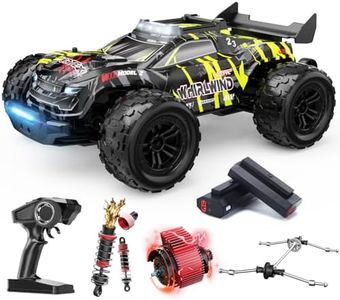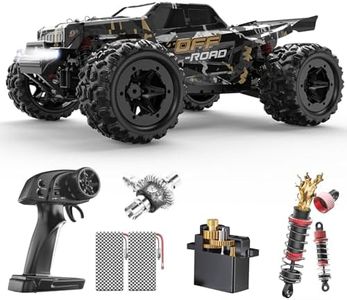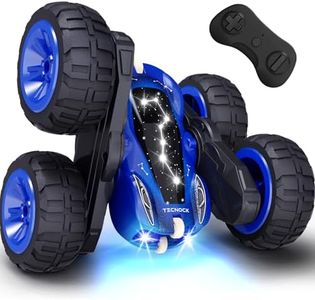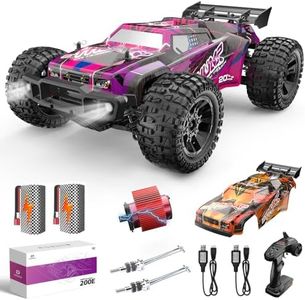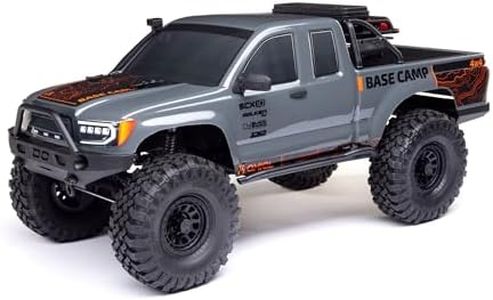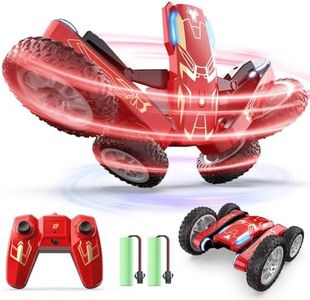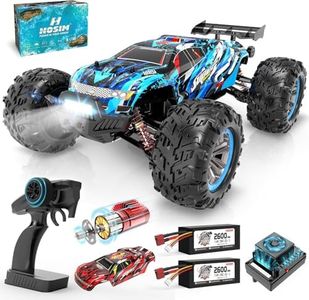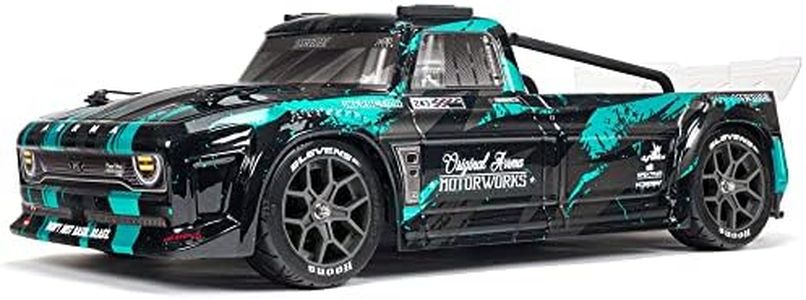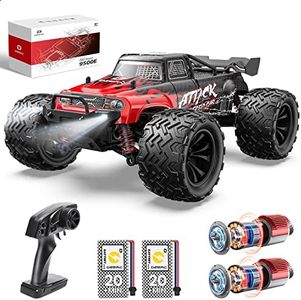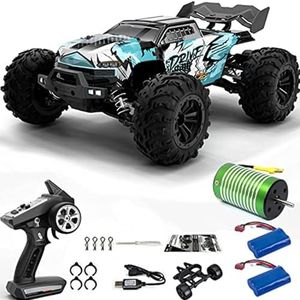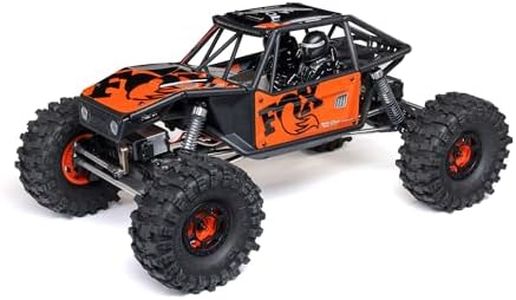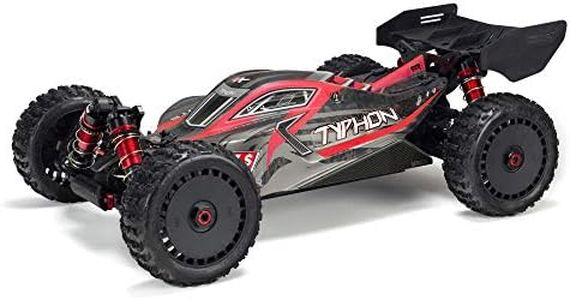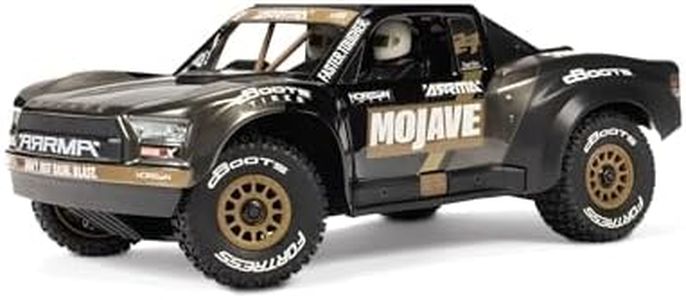We Use CookiesWe use cookies to enhance the security, performance,
functionality and for analytical and promotional activities. By continuing to browse this site you
are agreeing to our privacy policy
10 Best Outdoor Rc Cars
From leading brands and best sellers available on the web.Buying Guide for the Best Outdoor Rc Cars
When shopping for an outdoor RC car, the choices can be overwhelming, but remembering your needs and where you'll be driving the car is the best starting point. Outdoor RC cars come in many types and are designed for different terrains, from smooth tracks to rocky trails. Be honest about what you want—speed, stunts, big jumps, or just casual play—and focus on the essentials. This will help you pick a car that's reliable, fun, and perfectly matched for your outdoor adventures.Scale SizeScale size refers to how big the RC car is compared to a real vehicle. For outdoor use, common scales like 1:10 or 1:8 mean the car is large enough to handle rougher conditions, while smaller scales like 1:16 are lighter and might struggle off-road. If you want a car that can tackle grass, dirt, and rocks, go for a larger scale; smaller scales are better for smoother surfaces and easier transport.
Drive Type (2WD vs. 4WD)Drive type tells you how many wheels are powered. Two-wheel drive (2WD) cars are simpler, lighter, and often cheaper, but don't handle tough, slippery, or uneven ground as well as four-wheel drive (4WD) cars. 4WD cars power all wheels, giving them much better grip for off-road, grass, sand, or muddy tracks. Choose 4WD if you plan to explore rough, unpredictable terrain; go for 2WD if you'll stick to flat dirt or smooth grassy fields and want easier maintenance.
Motor Type (Brushed vs. Brushless)RC cars use either brushed or brushless electric motors. Brushed motors are simpler and easier to fix, but wear down faster and aren't as fast. Brushless motors are more powerful, last longer, and need less maintenance, making the car quicker and better at handling tough surfaces. If you crave speed and long-term reliability, go for brushless; if you're just starting out or mainly care about basic fun, brushed motors might be enough.
Suspension QualitySuspension is what lets your RC car handle bumps, jumps, and rough landings. Good suspension keeps the car stable, improves control, and prevents damage. You’ll find basic spring setups for less aggressive driving, and more advanced oil-filled shocks for better performance on rocky or bumpy ground. If you want to drive on challenging outdoor surfaces, look for advanced suspension; for casual runs on flat fields, simple suspension will do.
Tire TypeTires determine how well your RC car grips the ground. For outdoor use, there are specialized tires: knobby tires for grass and dirt, paddle tires for sand, and street-style tires for pavement. If you don’t know exactly where you’ll drive, pick all-terrain tires that handle a mix of surfaces. Focus on the type of terrain you'll use most to ensure your car performs its best.
Water ResistanceOutdoor play exposes your RC car to water, mud, and wet grass. Water resistance means the car’s electronics can survive splashes or damp conditions. Some cars are fully waterproof, while others are only partially protected. If you’ll be driving through puddles, wet grass, or mud, prioritize models with high water resistance. If not, basic splash protection might be all you need.
Battery Type and Run TimeBattery type determines how long and how powerfully your RC car runs. Nickel-based batteries (NiMH) are simple, safe, and cost less, but have shorter run times and lower speed. LiPo (lithium polymer) batteries are lighter, last longer, and provide more power, but need careful handling. If you want longer play and better speed, pick LiPo; for shorter, hassle-free sessions, NiMH is suitable. Think about how long you want to drive between charges and how willing you are to learn basic battery care.
